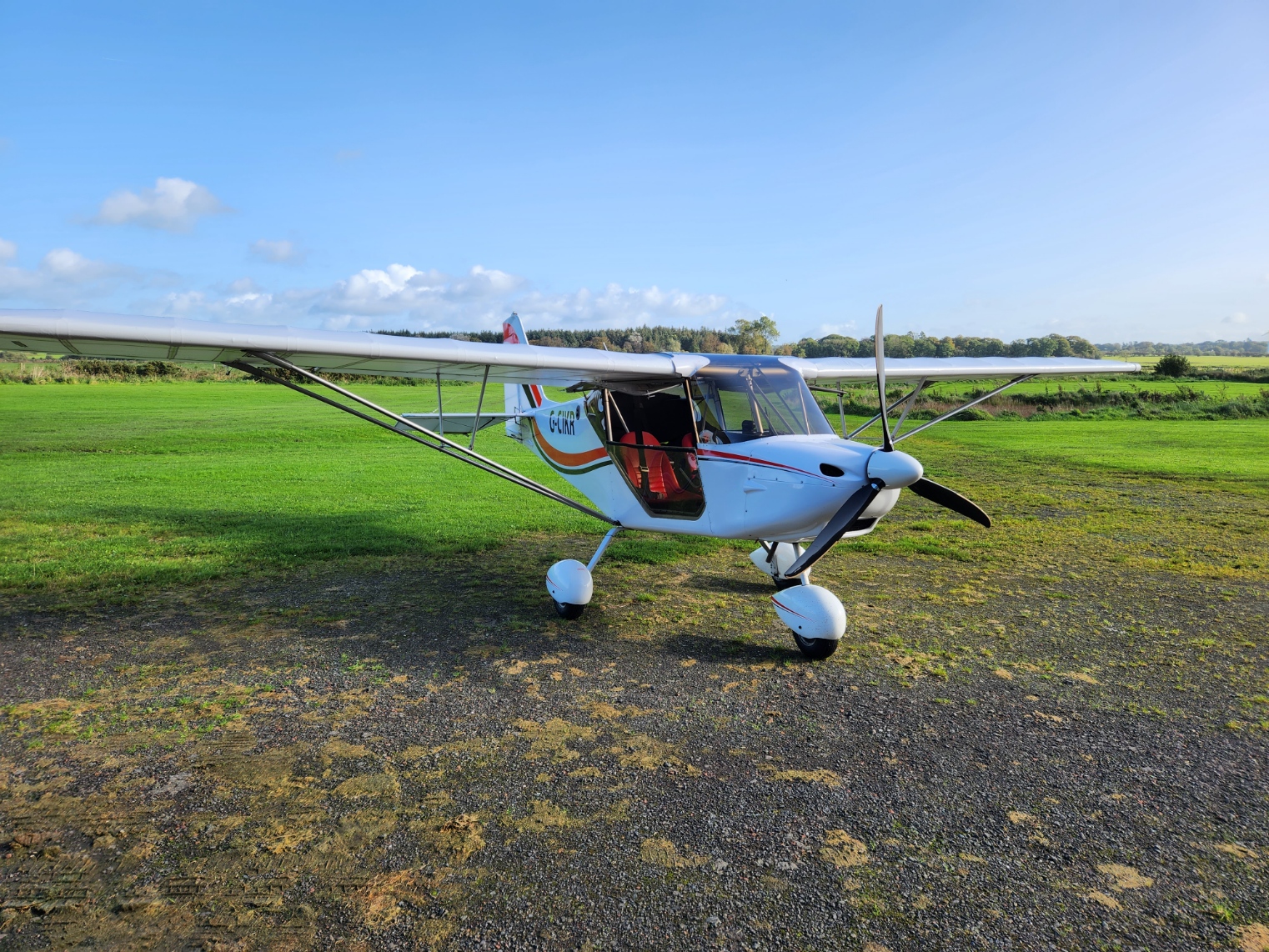

Learn to fly
Microlight flying is affordable
At Causeway Airfield we offer training for a UK NPPL (Microlight). This is a national licence known as the National Private Pilots Licence, however reciprocal recognition is common throughout Europe. Currently a microlight has a maximum weight limit of 472.5kg. This is likely to increase to 600kg soon and already manufacturers are offering aircraft to the higher limit. The licence requires a minimum of 25 hours plus passing five written exams and an oral exam, and of course a flight test. All can be done at Causeway as we have a resident instructor and CAA examiner.
Aviation may be seen as privilege, but flying a microlight is often a cheaper alternative to getting a full Private Pilots License (PPL) and can be more fun as the aircraft is smaller and you get a real sense of actually flying the aircraft/
If you are interesting in learning to fly, contact our club President mark Holmes who is also our certified instructor.
Training Syllabus
PHASE 1: FAMILIARISATION EXERCISES AND FOUNDATION
This is where you get used to the aircraft that you will be flying. As part of the NPPL it is the pilot in commands responsibility to ensure that the aircraft is safe to fly.
- Air experience: the first lesson
- Component parts, controls and systems of the aircraft
- Preparation for flight and actions after flight
- Effects of controls
- Taxying
PHASE 2: THE BASIC FLIGHT MANOEUVRES
Here you will get a real taste of flying. Your instructor will take you up and then it is up to you to fly the plane!
- Straight and level flight
- Basic climbing and descending
- Performance climbing and descending
- Turning flight
- Climbing and descending turns
PHASE 3: SLOW SPEED HANDLING
Your training involves alot of safety procedures, which you will learn to avoid and be able to recover saftely.
- Critically slow airspeed
- Stalling, and spin avoidance
- Spinning (Non flight exercise, discussion only)
PHASE 4: TAKE-OFF, LANDING AND CIRCUIT FLYING
The most nerving bit but also the most exciting part of flying you will experience.
- Circuit training
- Advanced take-off and landing techniques
PHASE 5: ADVANCED HANDLING
Here you will learn more advanced techniques.
- Advanced turning
- Unusual attitudes
PHASE 6: OPERATIONAL HAZARDS, EMERGENCY PROCEDURES AND UNEXPECTED/UNPLANNED OCCURRENCES
At this phase of training, you will learn more advanced procedures
- Forced landings
- Precautionary landings
- Operation at minimum level
- Action in the event of an engine/cockpit fire
- Systems failure
PHASE 7: SOLO FLIGHT TRAINING
The most exciting part of your training, getting into the air with nobody beside you. you will never forget this!
- First Solo
- Solo circuit, local area orientation and general handling consolidation
PHASE 8: VFR NAVIGATION
learning to fly is the easy part, You will also need to learn how to navigate to the rules of VFR flying
- Pre-flight planning
- En-route navigation, departure and arrival procedures
- Navigation at minimum level and/or in deteriorating conditions
- Unsure of position and lost procedures
PHASE 9: PREPARATION FOR THE GENERAL SKILLS TEST AND GROUND ORAL EXAM
You are nearly at the finish line. You will need to take some exams and have a flight with your instructor to get that all important pass.
- Dual revision for GST
- Revision for the ground oral exam
- Documentation review
- General Skills Test
- oral exam